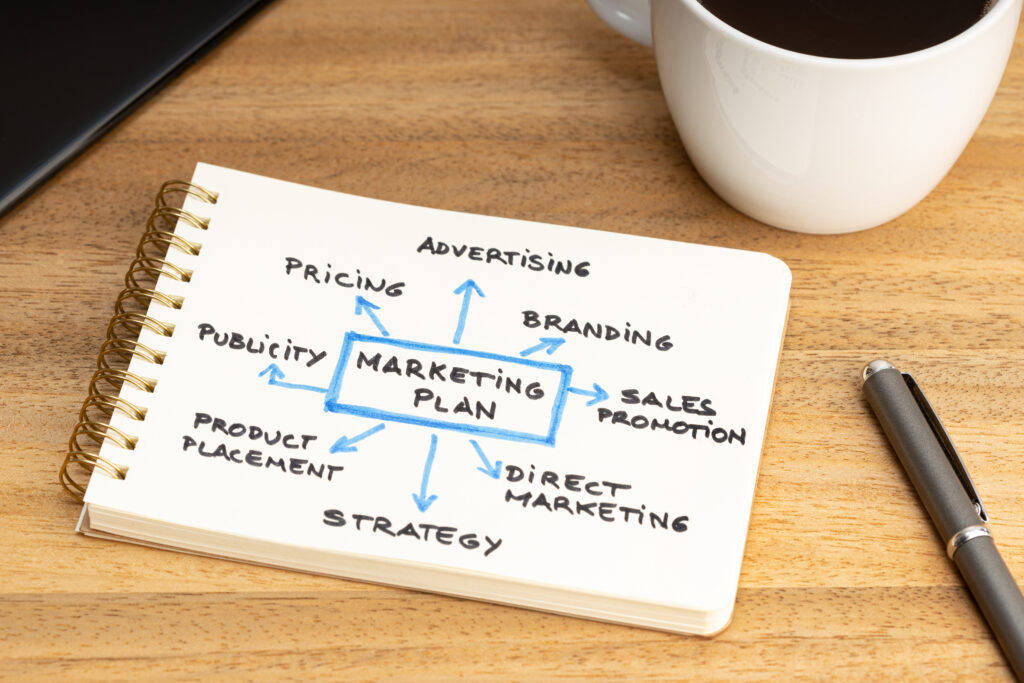Marketing is essential for any business looking to build awareness, acquire new customers, and promote their brand. While tactics have evolved significantly over the past few decades, most strategies still fall under two main categories – online and offline marketing. But how do you determine the best approach to achieve your specific business goals?

The key is to research how to make a marketing plan that leverages the right mix of digital and real-world strategies tailored to your brand. In this article, we’ll compare the key benefits and limitations of online vs offline marketing options. We’ll also provide tips for integrating both online and offline tactics into a cohesive marketing plan based on your target audience, objectives, and budget.
Offline Marketing Tactics
Offline marketing encompasses traditional strategies that engage customers through physical mediums and in-person interactions. Common examples include:
Print Advertising
- Billboard ads
- Magazine ads
- Newspaper ads
Print advertising allows you to reach local audiences by placing ads in publications they read regularly. While readership is declining with the digital age, print ads can still be highly effective for certain demographics.
TV and Radio Advertising
- TV commercials
- Radio spots
Broadcast advertising provides broad reach by airing your message on TV and radio stations. While expensive, it can help quickly boost brand awareness.
Direct Mail Marketing
- Postcards
- Catalogues
- Letters
Direct mail campaigns involve sending physical materials like postcards straight to your target customers’ houses. This tactic can help you stand out and make a good impression.
Tradeshows and Events
- Expos
- Conferences
- Pop-up shops
Having a physical presence at relevant events allows you to directly engage with your target audience face-to-face. It’s a great way to build relationships and increase brand exposure.
Out-of-Home Advertising
- Billboards
- Transit ads
- Street furniture
Out-of-home advertising places your message in high-traffic public places like bus stops and train platforms. It offers broad reach for raising awareness among audiences on the move.
Offline Retail Marketing
- In-store displays
- Packaging
- Window displays
In retail spaces, you can use displays, signage, and packaging to catch shoppers’ attention. Retail marketing helps boost visibility and sales in brick-and-mortar stores.
Pros:
- Drives in-person engagement
- Physical reminders make a lasting impression
- Less competition and clutter
Cons:
- Limited ability to track results
- Less targeted
- Higher cost per impression
Online Marketing Tactics
In contrast to offline efforts, online marketing leverages the internet and digital channels to connect with customers. Common online tactics include:
Search Engine Optimisation (SEO)
- Keyword optimisation
- Link building
- Local SEO
SEO helps people find your website organically on search engines like Google by optimising your content and site for relevant keywords. The higher you rank, the more search traffic you earn.
Pay-Per-Click (PPC) Advertising
- Google Ads
- Facebook Ads
- Amazon Ads
PPC advertising lets you pay to show ads on search engines, social media, and other sites when people search for terms related to your business. You pay per click versus per impression.
Social Media Marketing
- Facebook posts
- Instagram stories
- LinkedIn engagement
Promoting your brand on social platforms like Facebook, Instagram, and LinkedIn helps you reach, engage, and influence current and potential customers.
Email Marketing
- Promotional emails
- Newsletters
- Automated emails
Email marketing allows you to directly contact subscribers with targeted messaging like newsletters, special offers, and product announcements.
Online Display Advertising
- Banner ads
- Video ads
- Native ads
Display ads let you reach new audiences by placing visual ads on high-traffic websites that align with your customer interests.
Affiliate Marketing
- Influencer partnerships
- Referral programs
Affiliate marketing involves partnering with influencers and websites to promote your products to their audiences in exchange for a commission on sales. Just make sure to avoid these errors.
Website and Blog Content
- Product pages
- Blog posts
- Videos
Optimised website content, blogging, and videos help boost SEO and give potential customers valuable information to make informed decisions.
Pros:
- Highly measurable results
- Targeted reach
- Lower costs
Cons:
- Less personalisation
- Easy to get lost in the shuffle
- Constant optimisation needed
Key Factors to Consider
When determining the best marketing strategy for your brand, start by considering your business type, target audience, objectives, and resources.
Your Business Model and Industry
Some businesses naturally lend themselves better to online or offline marketing. Local service businesses like contractors often thrive with offline tactics like direct mailers and events. But nationwide ecommerce retailers typically focus on digital ads and SEO.
Your Target Audience’s Preferences
Look at factors like your customer demographics, media consumption habits, and whether they are local or global. Younger customers may rely more on social media, while older generations might prefer TV or print.
Your Marketing Goals
Are you focused on brand awareness, lead generation, or driving sales? Different tactics work better for different goals. PPC ads help drive immediate sales, while blogging boosts organic reach over time.
Your Available Marketing Budget
Certain tactics like paid search ads have low barriers to entry, while broadcast ads are very expensive. Set realistic budgets based on your current resources and projected returns.
Start Planning Today
Developing an integrated strategic marketing plan is crucial for any brand’s success. Both online and offline tactics offer unique benefits in building awareness, driving sales, and connecting with customers. By leveraging the right mix of digital and real-world marketing tailored to your business and audience, you can cost-effectively grow your brand and exceed your goals. Use these tips to start building your cross-channel marketing strategy today.




